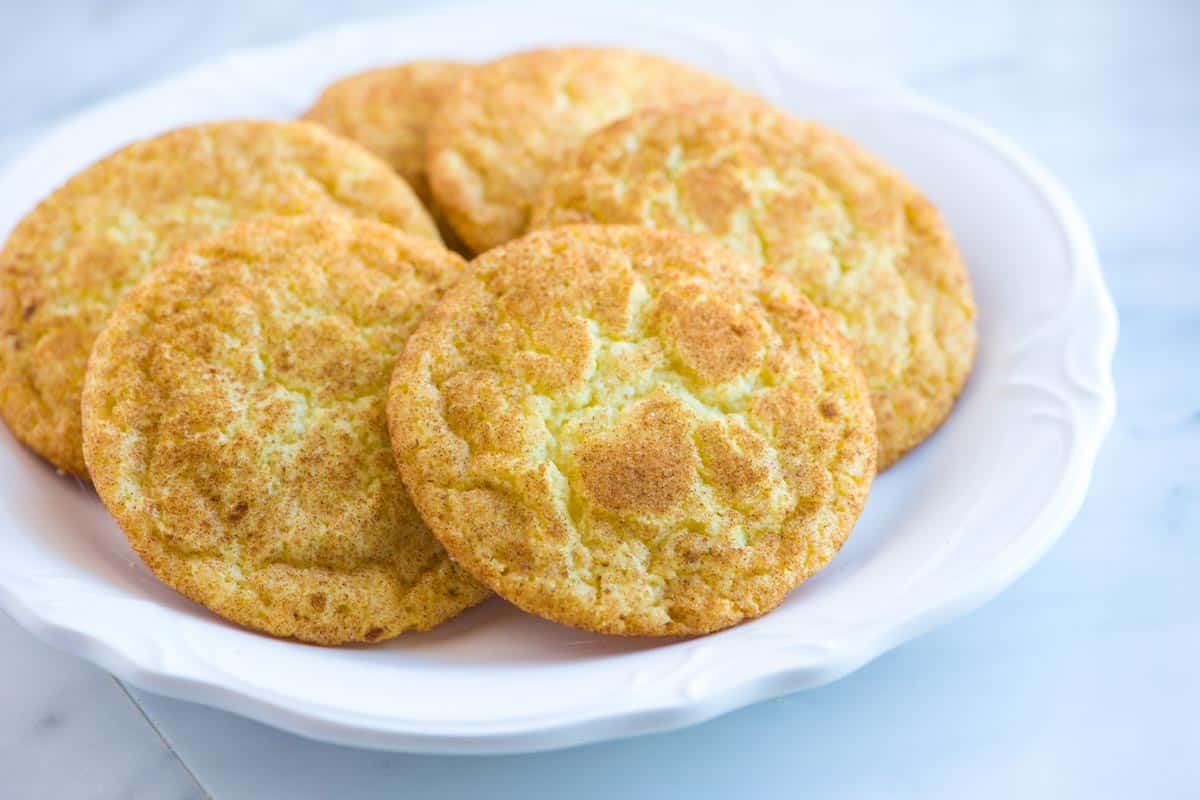 When I was growing up, these were my favorite cookies. Under self-imposed lockdown for COVID, I’ve recently started baking cookies again, so I dug up my mother’s recipe for these. My first try worked okay, but I wondered what other recipes might be available, so I did an online search. I found several interesting things, including some science-based hints on “room temperature” butter. Combining the traditional recipe and some of the hints I found online gave me this recipe.
When I was growing up, these were my favorite cookies. Under self-imposed lockdown for COVID, I’ve recently started baking cookies again, so I dug up my mother’s recipe for these. My first try worked okay, but I wondered what other recipes might be available, so I did an online search. I found several interesting things, including some science-based hints on “room temperature” butter. Combining the traditional recipe and some of the hints I found online gave me this recipe.
One big improvement over the original is that the dough doesn’t require chilling in order to form it into balls. This is due, I think, to reducing the number of eggs from two to one. Almost all recipes call for two eggs, but I found one that called for one egg plus one egg yolk. However, even with the lower number of eggs, I got dough that was gloppy and hard to form into balls. I was using jumbo eggs, though, so I tried using just one jumbo egg, and it turned out perfectly!
This turned out to be much easier than the traditional recipe. The dough did not require chilling in the refrigerator and was easy to handle. Moreover, cookies from the traditional recipe, while delicious on day one, tended to harden and by day three became snicker rocks. These stayed soft in the middle for as much as four days, assuming they last that long in your house!
The butter for this recipe needs to be room temperature. If–like me–you think this means “leave the butter out overnight” or “soften in microwave,” it turns out we’d both be wrong. To get “room temperature butter,” leave it out on the counter for roughly an hour before baking. When you press on it with a finger, you should get a small indentation, but it should still be relatively hard, not gloppy soft. A microwave won’t heat the stick of butter all the way through, so it’ll be too soft on the outside and still too hard on the inside. When you mix room temperature butter with the sugar, the moderate hardness of the butter aerates the mixture, making it fluffier and resulting in softer cookies. That’s the science part I learned from going online.
This recipe makes about three dozen cookies. I can usually fit fifteen cookies on a cookie sheet, so I wind up having two full sheets and one with around six cookies on it. Usually, I prepare one sheet and put it in the oven. While that one is cooking, I prepare the second sheet, then I do the third while the second cooks. The third, partial sheet, is usually done at a little over 9 minutes. That means I use three cookie sheets, but since I use silicon baking sheets, they don’t get dirty and I can just put them back in the cabinet after they cool.
So, here’s the composite recipe I’m now using for snicker doodles.

Ingredients
Method
- Preheat oven to 375 degrees
- Line two large cookie sheets with parchment paper or silicon baking mats
- Make the topping by combining the sugar and cinnamon in a small, shallow bowl
- Beat the sugar and butter together on high speed using a hand mixer or stand mixer with the paddle. After about two minutes, it should be smooth and creamy. Add the egg and vanilla extract, and beat on medium speed until combined. You will likely need to scrape the sides and bottom of the bowl to assure mixing.
- In another bowl, sift together the remaining dry ingredients (I just use a whisk to combine them).
- Return to the bowl with the sugar, butter, and egg mixture. With the mixer running at low speed, add the dry ingredients in thirds, mixing thoroughly between additions. The resulting dough will be thick.
- Roll the dough into balls about 1.5 inches thick–about 1.5 TBSP of dough per ball. Roll each ball in the topping mixture and place about 2-3 inches apart on the cookie sheets.
- Bake cookies for ten minutes. They will flatten some while baking, but still be puffy. Remove from the oven and use a fork to press down on each cookie to flatten slightly. Let cool on the baking sheet for at least ten minutes, then transfer to wire rack to finish cooling.
